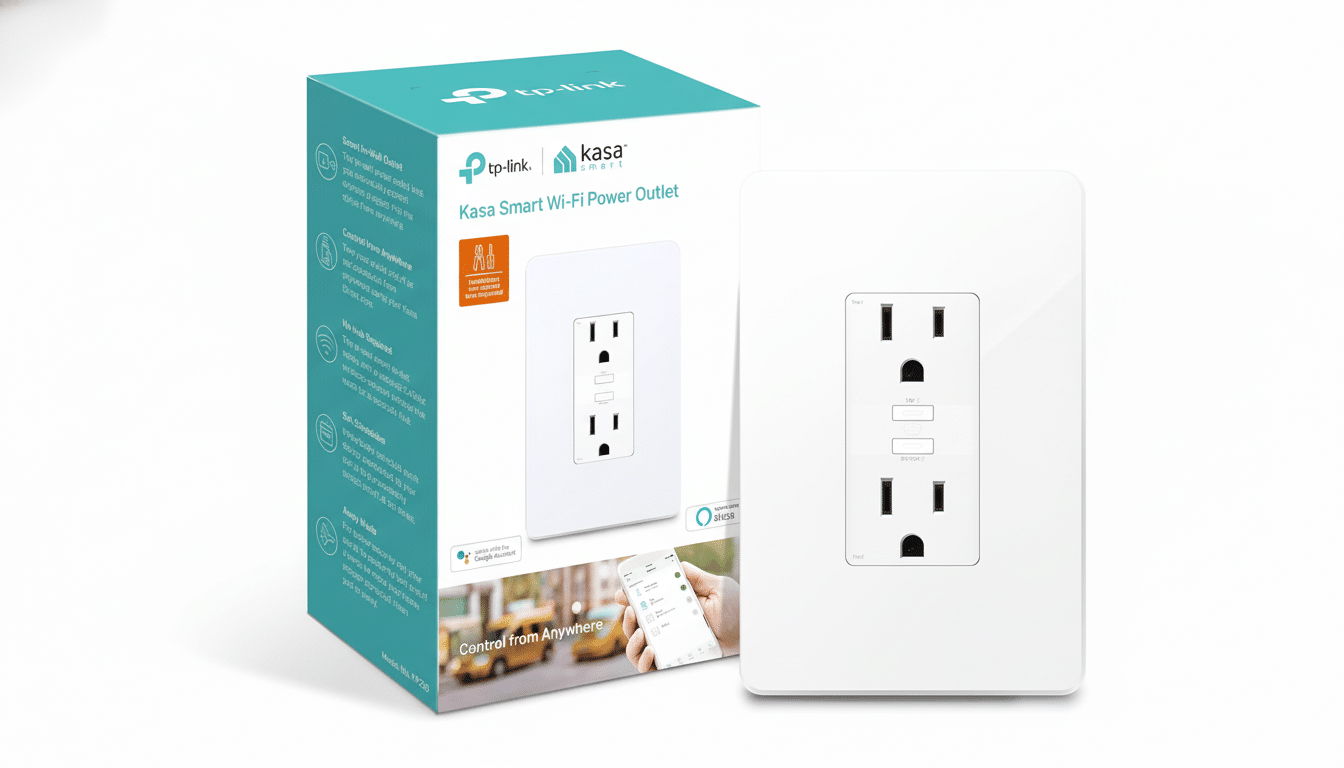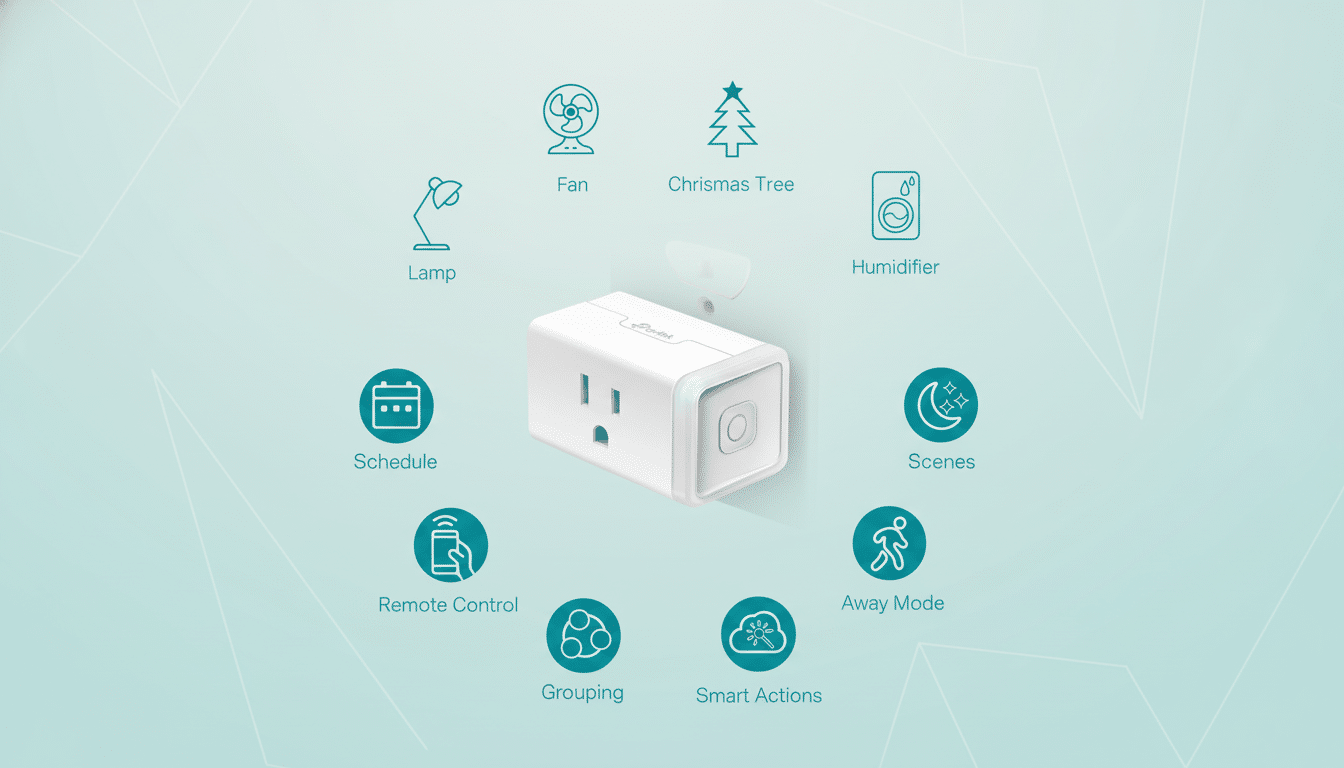It’s not just TVs and laptops that are part of Prime Day. If you’re in purse‑tightening mode, the under‑$25 aisle is home to the quiet sort of upgrades that get life done: smart plugs that automate your lamps, Wi‑Fi extenders that will banish dead zones forever, smart bulbs for setting a mood, trackers for keys and even compact speakers. Last year’s event produced more than $12 billion in US online spending, and electronics were among the best‑discounted products, according to Adobe Analytics — evidence that small‑ticket tech can deliver outsized value when you time it right.
Smart Home Upgrades Under $25 Worth Buying
Smart plugs are always designed to be sub‑$25 winners. Seek out compact models from brands like Amazon and TP‑Link Kasa that support scheduling, away modes, and voice assistants. If you use more than one platform or anticipate changing phones, favor plugs compatible with Matter to make sure the investment in your setup remains flexible. Energy monitoring is a nice bonus for keeping an eye on power‑sucking appliances; you’ll usually find it on slightly more expensive models, although it can dip below $25 during big sales.

Another low‑cost upgrade with a large user‑experience gain is smart bulbs. Color A19 bulbs from TP‑Link, Govee, and Sengled can easily wind up in the $10–$24 range per bulb in multipacks. Dimmable whites are even cheaper. It all depends on your needs and circumstances. No matter which bulbs you pick, check the key spec: connectivity. Wi‑Fi bulbs are easiest for renters, while Thread/Matter bulbs help future‑proof multi‑brand homes. At around 800 lumens of brightness, that’s comparable to a regular 60W equivalent and should be more than sufficient for bedrooms and home offices.
Night lights with app control — such as kid‑friendly color globes — often cost less than $20. They go with routines, so lights can dim at bedtime or cast a soft glow during those early wake‑ups. Some models can track sunrise/sunset schedules without additional hubs, a nice touch that ensures family configurations stay simple.
Pocket‑Size Audio and Tech Accessories for Under $25
Low‑end smart speakers sometimes plunge to $24.99, which is how much you can spend to give kitchens or dorm rooms voice control without investing in a larger command center. Look for solid far‑field mic performance and physical mute buttons. You’re not going to get room‑filling sound at this price, but news briefings, timers, the intercom system, and basic music playback are all good reasons to snag a compact one when the price is right. A popular choice is the Echo Dot.
Cables and chargers are also savvy sub‑$25 grabs. It’s not unusual to see USB‑C‑to‑USB‑C cables (rated for 60W or 100W) in multipacks hit single‑digit prices. For wall adapters, look for GaN technology and UL certification — brands that use Gallium Nitride power circuitry and carry the Underwriters Laboratories mark. A single‑port 30‑watt USB‑C charger can fast‑charge most phones and smaller tablets, and we often see it in Prime Day bins at this price bracket, discounted to $12–$18. A reliable example is the Anker USB‑C‑to‑USB‑C cable and the Anker GaN USB‑C charger.
Extend Your Wi‑Fi Without Spending Too Much Money
Wi‑Fi extenders that cost under $25 won’t compare with a full mesh system, but they can inexpensively solve one specific dead spot. TP‑Link and Netgear models will often be on sale in this range.
For apartments or one intractable room, an AC750 or AC1200 extender is probably fine. Just keep in mind the trade‑offs: most extenders cut throughput on the extended band in half and add latency. If you’re a home‑office worker or want to stream 4K into multiple rooms, plan on upgrading to mesh later. In the meantime, put the extender halfway between your router and no‑connection territory (but not right on the edge of its range).
Trackers and Home Security Devices for Under $25
Bluetooth trackers like Tile Mate often dip to around $15 to $20 during major sales, while older‑generation Apple AirTags occasionally hover just under $24 in multipacks. The difference here is network size: Apple’s Find My network is huge, whereas Tile’s crowdsourced network does not depend on what phone you are using. If you’re in the Android world, consider Tile or Samsung SmartTag models; for iPhone users, AirTag’s precision finding is hard to beat — though UWB precision will tend to hover just above that $25 line unless you luck into a flash deal.

Budget 1080p indoor cameras (like Blink Mini or an entry‑level Wyze offering) frequently dip below $25. You’ll receive motion alerts, live view, and night vision, with cloud storage available via optional subscriptions. Look for privacy shutters and support for two‑factor authentication. If you’re installing in a rental, think adhesive‑friendly or stand‑based designs first.
Health and Everyday Tech Utilities Under $25
Smart bathroom scales from Etekcity and Wyze can frequently be found in the low‑$20 range and will sync your weight and body metrics to Apple Health and Google Fit. Although bioimpedance estimates, such as body fat percentage, can fluctuate depending on hydration status and time of day, trends over time are still useful. If you’re sharing a scale, make sure it offers multiple profiles and automatic recognition.
Don’t forget practical add‑ons: adjustable stands for small smart displays, magnetic phone grips, screen protectors, and AAA rechargeable battery kits. These are habit‑formers; small improvements that make the tech you already own a little easier to use each day.
How to Make Sure That You’re Actually Getting a Real Deal
Price‑history tools such as CamelCamelCamel and Keepa can help verify whether a “deal” is indeed the lowest‑ever price or just a regular markdown. Numerator’s Prime Day data indicates heavy volume in the sub‑$25 range, so competition among sellers is fierce — use that to your advantage by checking out similar items before you pull the trigger.
Give the fine print a read for ecosystem lock‑in. An Alexa‑only smart plug is a steal in an Alexa household, but a Matter‑equipped plug leaves your options open if you transition to Google Home or Apple Home down the road. Look at certifications, too: UL or ETL for plugs and chargers, and WPA3 support for Wi‑Fi gear if you can get it.
Finally, consider the total cost. Certain cameras need paid‑for storage for their full range of functions, and some trackers have to be used with premium plans in order to work with smart alerts. A $20 gadget that requires a $5 monthly subscription is not the bargain it sounds like after one year.
Bottom line: If you aim at the right categories — smart plugs, bulbs and compact speakers, basic extenders, trackers, and smart scales — you can pile up meaningful quality‑of‑life upgrades for less than the cost of dinner. Prime Day remains a top opportunity to do so, especially when you confirm actual bargains and select gear that makes sense in your ecosystem today — and tomorrow.

